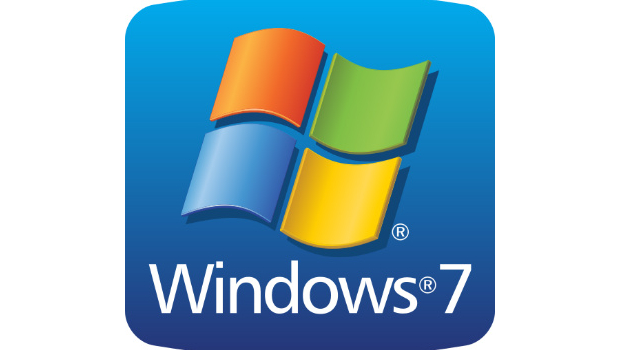Businesses are rushing toward Windows 10 as fast as they can, but they simply need more time. To accommodate them, Microsoft is trying something different: creating a transitional list of PCs built on the latest Intel Skylake hardware, but certified to run the tried-and-true Windows 7 and Windows 8.1 operating systems for now.
The programme tacitly acknowledges that enterprises have a hardware budget they need to spend, and migrating a company from Windows 7 and Windows 8.1 can literally take years. Running an older OS on top of the latest hardware represents a “customer-first” approach to the transition, Microsoft said.
Still, the carrot comes with a pair of sticks. Microsoft will support the list of Skylake PCs running Windows 7 and 8.1 for only 18 months, until July 2017. And while the Windows 7/8.1 integration is being designed with Intel’s Skylake in mind, new PCs based on upcoming chips — Intel’s Kaby Lake, Qualcomm’s 8996 chips, or AMD’s Bristol Ridge — will all require Windows 10.
Why this matters: Microsoft’s free upgrade to Windows 10 was really a grassroots campaign to lobby businesses to adopt the new OS — and continue lucrative license fees and support contracts. The 200 million “active” devices that now run Windows 10 prove the strategy has partially worked. Still, over 55% of the world’s PCs run Windows 7, including businesses who consider it to be a stable operating system. Microsoft appears willing to be patient, as long as the migration does happen, eventually.
Business adoption
Even as Windows 10 adoption seems to be slowing, it appears businesses are embracing it. “The interest is definitely there,” said Bob O’Donnell, chief analyst at TECHnalysis Research, who ran several surveys of businesses in the fall, both in the United States and abroad. “But the interest and when they can do [deploy] it are two different things.”
“Companies are generally positive toward Windows 10,” agreed Steve Kleynhans, an analyst at Gartner.
Kleynhans said the industry has wrestled with the same sort of transition pains in the past, such as when companies migrated off Windows XP. “I don’t think that Microsoft needs to push them,” he added. “Companies are moving as fast as they can.”
Hardware budgets, however, force a company to buy PCs before they may be ready to roll out. The budget and the process for rolling out new PCs is not usually aligned with the project of deploying a new operating system across a company, Kleynhans noted. A company may buy a traditional notebook now and deploy it with Windows 7, intending to upgrade it to Windows 10 in a year’s time.
Widening gap
Microsoft says it is doing its best to bridge the gap between users’ enthusiasm for new hardware with their attachment to old software. “What we wanted to address… was that customers are buying new hardware every day,” Terry Myerson, executive vice president of the Windows and Devices Group at Microsoft, in an interview.
Although PC sales continue to drop, they are still the platform of choice for most enterprises, and Windows comes with them. “We expect to see 300 million what we categorise as new PCs this year, and they want clarity as to where they can get fully-supported quality in those purchase decisions,” Myerson added.
Microsoft’s approach prioritises keeping users on Windows first. If customers want the latest experience, they can turn to Windows 10. But now Microsoft and its partners have provided a “robust list of options” for customers to buy the latest hardware that will be patched and supported, while still running a tried-and-true OS, Windows 7 or Windows 8.1. “If you really value reliability and compatibility above all else, then there’s the option of buying hardware with the platform that was designed for it,” Myerson said.
The list of approved PCs includes several top brands:
- Dell Latitude 12
- Dell Latitude 13 7000 Ultrabook
- Dell XPS 13
- HP EliteBook Folio
- HP EliteBook 1040 G3
- Lenovo ThinkPad T460s
- Lenovo ThinkPad X1 Carbon
- Lenovo ThinkPad P70
The 18 months of support matters because running an aged OS running on cutting-edge hardware requires some finesse. Windows 7 was released in 2009, well before Intel even began designing the Skylake chips. That means Windows 7 or Windows 8.1 has certain expectations regarding hardware power states and interrupt processing, and any tweaks to the device drivers or firmware can cause issues, according to Microsoft. The support Microsoft and its partners will offer includes special testing to accommodate those quirks, as well as tools to help update the OS and BIOS once the customer decides to upgrade to Windows 10.
Myerson said Microsoft worked together with its PC partners, including Intel, to create the list of approved PCs, as well as to jointly test BIOS updates and drivers. So far, there’s no indication that the list of Skylake PCs will include consumer models. Support of the Skylake Windows 7/8.1 PCs will include validation of Windows Updates to reduce regressions like security concerns, the company said.
After the 18-month support timeframe ends on 17 July, 2017, only the “most critical” Windows 7 and Windows 8.1 security updates will be addressed for those PCs, and “will be released if the update does not risk the reliability or compatibility of the Windows 7/8.1 platform on other devices,” Microsoft said in a blog post. Windows 7 remains on extended support until 14 January, 2020, and Windows 8.1 until 10 January, 2023.
Mark Hachman, IDG News Service







Subscribers 0
Fans 0
Followers 0
Followers